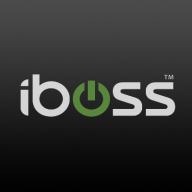


Axonius and JumpCloud are competing products in IT management and security solutions. Though Axonius is lauded for its asset management and customer support, JumpCloud stands out with a comprehensive feature set, particularly appealing to those prioritizing identity management capabilities.
Features: Axonius provides robust asset visibility and management, integrating with over 900 solutions to deliver a holistic view. Its agentless operations simplify data collection across environments. The product excels in deduplication and provides custom query capabilities to help track assets precisely. JumpCloud offers a versatile cloud-based directory service with seamless SSO options that integrate multiple systems like Microsoft 365 and Google Workspace. It features extensive policy management for devices, allowing effective control over access and deployment. JumpCloud’s Radius authentication enhances security, particularly in coordinating identity management across various platforms.
Room for Improvement: Axonius might improve its user interface to enhance the user experience further. The customization options, while powerful, may require more intuitive guidance for users unfamiliar with query systems. Incorporating more real-time analytics could also enhance its usability. JumpCloud could refine areas like device patch management for greater efficiency. Improving integration with non-SAML applications would broaden its applicability. Additionally, expanding the reporting capabilities can offer more in-depth insights into system performance.
Ease of Deployment and Customer Service: JumpCloud's cloud-native deployment model stands out for its simplicity, making it ideal for companies with diverse workforces. Its user-friendly design translates into simpler management and reduced setup time, providing easy scalability. Axonius, on the other hand, may require substantial integration effort due to its extensive feature suite, yet offers robust support to aid customers through deployment hurdles. The ease of handling APIs ensures its effective operation without needing extensive on-premise infrastructure.
Pricing and ROI: Axonius presents competitive pricing with significant ROI driven by asset management efficiencies and extensive integration. Its cost-effectiveness appeals to those prioritizing a comprehensive view of asset management. JumpCloud’s pricing reflects its depth in identity management capabilities. Despite a potentially higher initial cost, the extensive feature set and streamlined identity control can deliver superior perceived ROI, especially in environments requiring robust identity and access management solutions.



| Company Size | Count |
|---|---|
| Small Business | 6 |
| Midsize Enterprise | 6 |
| Large Enterprise | 5 |
| Company Size | Count |
|---|---|
| Small Business | 2 |
| Midsize Enterprise | 2 |
| Large Enterprise | 3 |
| Company Size | Count |
|---|---|
| Small Business | 13 |
| Midsize Enterprise | 2 |
| Large Enterprise | 3 |
iboss offers a comprehensive security platform designed for diverse use cases such as web filtering, data loss protection, corporate proxy services, and URL filtering.
iboss integrates advanced features to address dynamic security needs, leveraging its strength in SASE, ZTNA, AI initiatives, and cloud integration, while ensuring seamless operations for remote work. It excels in historical forensics, malware protection, and flexible cloud deployments. Users benefit from comprehensive traffic scanning, robust malware detection, and PaaS capabilities that reduce hardware management. An intuitive admin console ensures efficient management with content filtering and low false positives. SSL decryption enhances security, while DLP protects data in AI conversations. Deployment is rapid and scalable, allowing effortless integration with emerging technologies.
What features does iboss offer?
What benefits and ROI should users consider?
iboss finds significant application in sectors such as education, where web filtering for K-12 is crucial, and in corporate environments requiring robust proxy services and URL filtering for network security. Its adaptability is essential in scenarios demanding flexible, decentralized security frameworks, particularly for remote work setups.
Axonius offers robust asset management, enhancing network visibility by consolidating data from various devices. It excels in automatic device categorization for up-to-date inventories, crucial for compliance and risk assessments. Key features include automated policy enforcement and comprehensive reporting tools, which streamline workflows and improve organizational productivity and security compliance. Integrations with other IT tools further enhance its efficiency.
JumpCloud offers efficient device management, single sign-on, and integration capabilities. It integrates seamlessly with Microsoft 365 and Google Workspace, streamlining user management across diverse environments.
JumpCloud delivers device, user, and application management across platforms like Windows, Mac, Linux, and cloud services such as AWS and Azure. Acting as a cloud-based directory, it facilitates single sign-on and identity access management, making it an attractive replacement for Active Directory and LDAP directories. Its policy management and centralized directory simplify user and device administration, offering a user-friendly interface with flexible access control and remote management. Organizations can experience streamlined onboarding and offboarding processes, robust authentication, and scalability. Despite being powerful, room for improvement is noted in alert capabilities, comprehensive MDM for Windows, multi-tenant features, and API reliability.
What are the key features of JumpCloud?Companies across industries utilize JumpCloud for comprehensive management of devices and user identities. It is especially beneficial in technology-driven sectors where centralized directory services replace traditional Active Directory and LDAP models. Organizations employing platforms like AWS and Azure find it essential for maintaining efficient and secure access management.
We monitor all Cyber Asset Attack Surface Management (CAASM) reviews to prevent fraudulent reviews and keep review quality high. We do not post reviews by company employees or direct competitors. We validate each review for authenticity via cross-reference with LinkedIn, and personal follow-up with the reviewer when necessary.